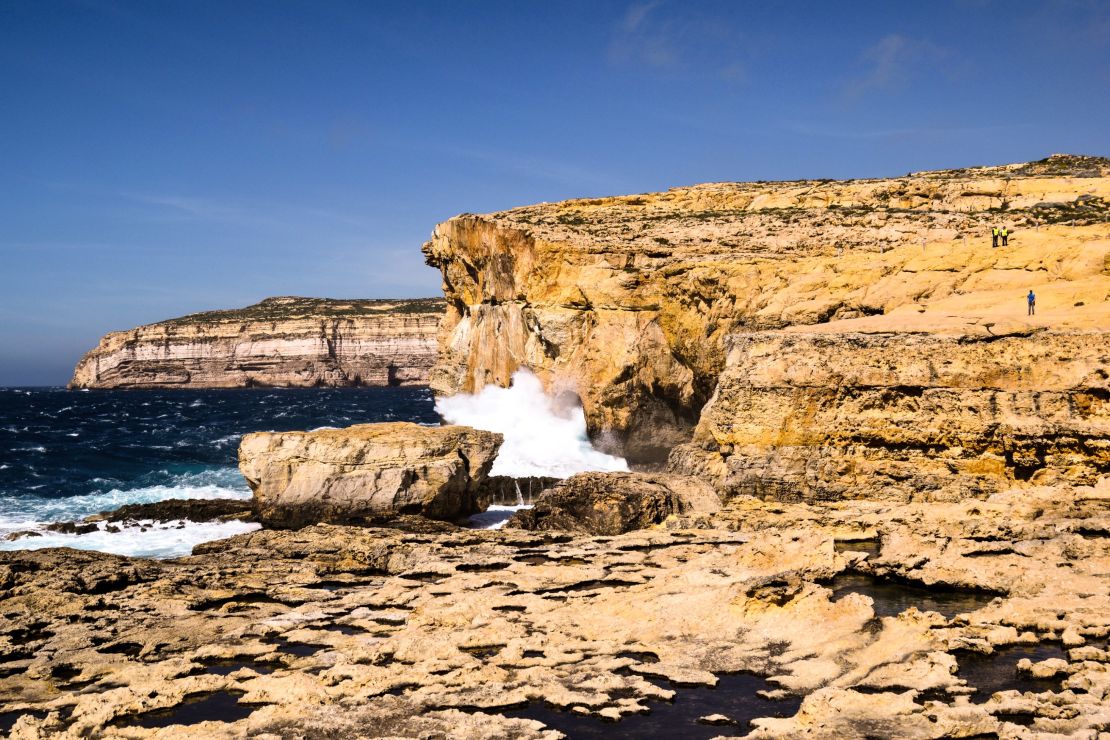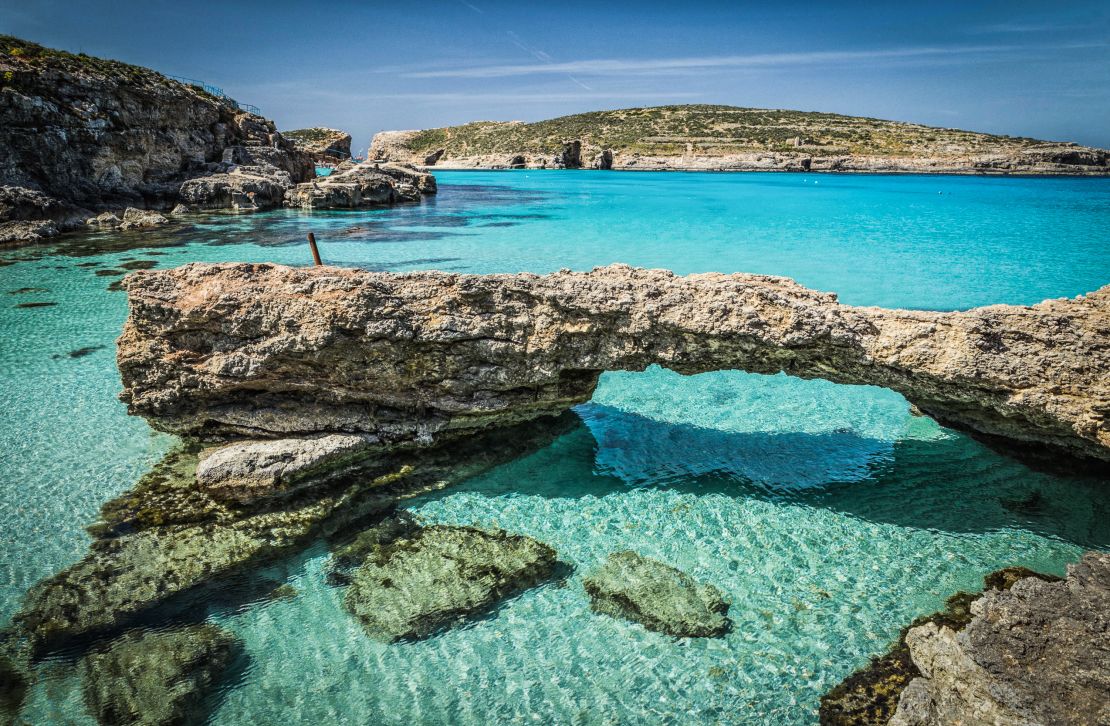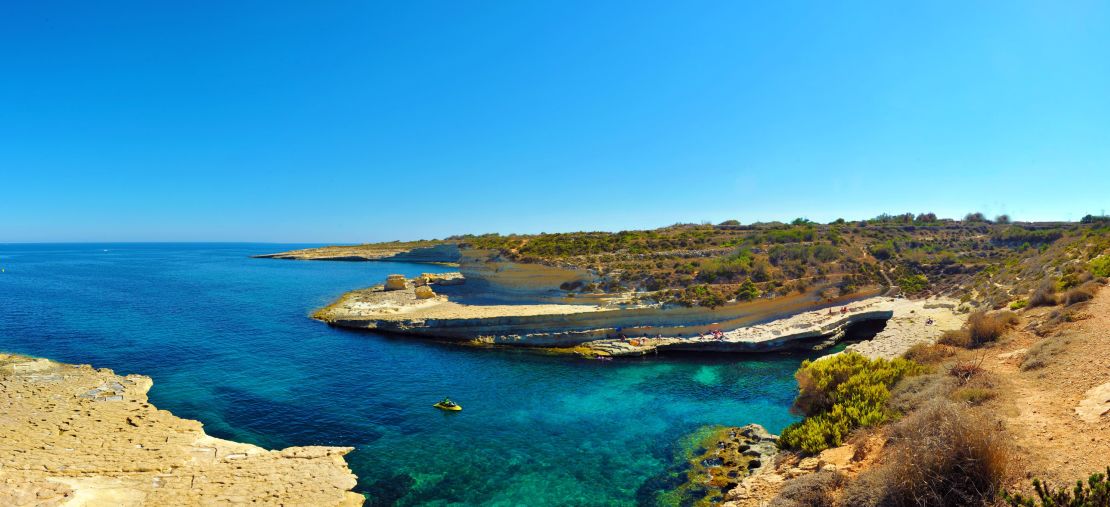The Azure Window, Malta’s massive flat-topped sea arch, was the pride of the tiny archipelago nation.
Now it only exists in pictures.
What’s a little country to do when its most significant natural wonder simply… crumbles?
The fall of the mega rock arch wasn’t the first and won’t be the last on Earth. Australia’s London Arch collapsed in 1990, Aruba’s Natural Bridge fell in 2005 and Morocco’s Agadir Arches followed in 2016.
But Malta’s Azure Window, known as Tieqa tad-Dwejra in Maltese, graced glossy marketing brochures since tourism began here and in many ways, the 50-meter-tall arch came to represent Malta itself.
Adventure travelers flung themselves off it for thrilling videos, while tourists flocked to it for selfies and photos.
It also adorned the backdrop of Hollywood films such as “Clash of the Titans” (1981), “The Count of Monte Cristo” (2002) and the first season of “Game of Thrones.”

“I never thought I’d see it gone in my life,” says Philip Spiteri, a local chef and owner of Ta Philip restaurant in Gozo, the Maltese island where the geological wonder once stood.
“I consider myself lucky to be alive during its time on Earth. It was a rare natural wonder created by nature and nature took it.”
Powerful gale-force winds in March 2017 led to the Window’s fall after years of noticeable erosion. Now, no visible rock is left above sea level. The rubble-filled sea floor below is a new sight for divers.
According to tour guide Maria Buckle, who had visited the Window countless times over her 20-year career, Dwejra is still a special place.
“It’s rich in flora and fauna, and it’s being considered as a UNESCO World Heritage Site. Here, boat rides head into the Dwejra’s inland sea cave and although the Azure Window won’t be waiting at the end of the ride as the boat heads into open sea, the tour is still a special experience that will happen this season, just like every season before.”

Paul Bugeja, chief executive of the Malta Tourism Authority, says there are lessons learned from the Window’s demise but no shortage of other riches to promote, especially as Malta’s capital Valletta prepares to take on the title of European Union Capital of Culture in 2018.
“While the Azure Window is sadly missed, this has us very much aware of the importance of safeguarding and preserving our heritage,” adds Bugeja.
“Several initiatives have been taken and others are still ongoing to restore and preserve our natural and man-made sights.”
He points out Malta has another window worth discovering, the lesser-known Wied il-Mielah Window.
Buckle says she has a richer kind of tour experience for her groups. The sad loss of the beloved Azure Window may be part of the narrative but what remains on Malta makes her proud.
“You can barely see us on a map and that’s part of the reason visitors underestimate us – because we are such a small country,” she says.
“The truth is the Azure Window was just the beginning.”
Here’s a list of Malta’s natural wonders to plan on seeing.

Wied il-Mielah Window
This lesser-known, natural limestone arch protrudes on the northwestern coast of Gozo in Gharb, offering visitors a similar experience to the Azure Window.
Dwejra Bay
The rocky shores where the Azure Window once stood remain rich in biodiversity, vertical cliffs, dry valley systems and freshwater wetlands.
Dwejra is also a significant bird breeding and nesting site.
Inland sea and the Dwejra Cave
Dwejra’s inland sea is a lagoon of seawater linked to the Mediterranean by a narrow natural arch. Here, boat rides take guests through the Dwejra Cave and its 80-meter tunnel that rises like a Gothic cathedral, passing smaller caves and fantastic coral, before entering the open sea.
Blue Hole
The Azure Window once looked over this 10-meter-wide inland sea pool where a large crevice leads to the open sea. Running down 25 meters, it has also been described as a “vertical chimney” making it a hotspot for divers.
Fungus Rock
Also in Dwejra, a 65-metre-high rock called Fungus Rock got its name during the reign of the Knights of St. John who guarded it for its rare medicinal plant Malta Fungus (Cynomorium coccineum).
Blue Grotto
The Blue Grotto is a tremendous limestone arch in southern Malta. At over 30 meters high, it’s a collection of six caves weathered over time, with dazzling rocks shining in shades of orange, purple and green.
St. Peter’s Pool
One of the most stunning natural swimming pools in Malta is a series of flattened rocks that tower above azure waters, a favorite for sun worshippers.

Ghar Lapsi
Tucked in a little bay with a view to Malta’s uninhabited Filfla island, Ghar Lapsi is another of Malta’s natural azure swimming pools. The cove is a walking and rock-climbing destination, reached by a winding road from just outside Siggiewi.
Dingli Cliffs
Near the village of Dingli on Malta’s western coast is the highest point of the Maltese archipelago. The Dingli Cliffs tower at 253 meters above sea level over terraced fields and open ocean views of Filfla.
Comino’s Blue Lagoon
Centered between Malta and Gozo is the tiny 1.4 square-mile Comino, a car-free island famous for the Blue Lagoon. The sheltered inlet of aquamarine water over white sand is stunning.
Marissa Tejada is an author, travel journalist and founder of the Travel Greece, Travel Europe blog. She tweets @tejadamarissa.












